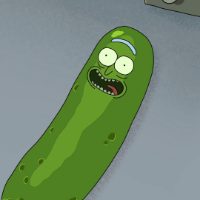-
Posts
5266 -
Joined
-
Last visited
-
Days Won
73 -
Donations
465.00 USD -
Points
3,500 [ Donate ]
Reputation Activity
-
 KaptCrunch got a reaction from Shadow in Gamers hacked playing Call of Duty: WWII—PC version temporarily taken offline
KaptCrunch got a reaction from Shadow in Gamers hacked playing Call of Duty: WWII—PC version temporarily taken offline
nothing is surcured today since the PC began for is a tool to monitor you as A.I. is the devil
heard the Commodore 64 has returned Oct 2025 starting $299, 349, 499
-
 KaptCrunch got a reaction from major-mark63 in Gamers hacked playing Call of Duty: WWII—PC version temporarily taken offline
KaptCrunch got a reaction from major-mark63 in Gamers hacked playing Call of Duty: WWII—PC version temporarily taken offline
that you think is PC, Mac, Smart Phone are ? Rugger is a sound board for games indy
Q can you tell NSA return my toothbrush and toothpaste for are missing
-
 KaptCrunch reacted to Qualicum in Gamers hacked playing Call of Duty: WWII—PC version temporarily taken offline
KaptCrunch reacted to Qualicum in Gamers hacked playing Call of Duty: WWII—PC version temporarily taken offline
Rugger runs the servers as an NSA honeypot to try to lure KaptCrunch in... He's gonna get him one day
-
 KaptCrunch got a reaction from BlackRose in Gamers hacked playing Call of Duty: WWII—PC version temporarily taken offline
KaptCrunch got a reaction from BlackRose in Gamers hacked playing Call of Duty: WWII—PC version temporarily taken offline
nothing is surcured today since the PC began for is a tool to monitor you as A.I. is the devil
heard the Commodore 64 has returned Oct 2025 starting $299, 349, 499
-
 KaptCrunch got a reaction from major-mark63 in Gamers hacked playing Call of Duty: WWII—PC version temporarily taken offline
KaptCrunch got a reaction from major-mark63 in Gamers hacked playing Call of Duty: WWII—PC version temporarily taken offline
internet was always empty for me so stuck with canpaine
heres some info
📊 Call of Duty Revenue & Profit (2014–2023)
Year Revenue (Est.) Profit (Est.)
2014 $2.2 billion ~$600 million
2015 $2.5 billion ~$700 million
2016 $2.8 billion ~$800 million
2017 $3.2 billion ~$900 million
2018 $3.5 billion ~$1.0 billion
2019 $4.0 billion ~$1.2 billion
2020 $8.1 billion ~$2.2 billion
2021 $8.8 billion ~$2.5 billion
2022 $8.5 billion ~$2.3 billion
2023 $8.7 billion ~$2.4 billion
💡 Highlights:
Total revenue (10 years): ~$53 billion
Total profit (10 years): ~$14 billion
Big jump from 2020 thanks to Warzone & Mobile.
-
 KaptCrunch got a reaction from Ghostlupus in Gamers hacked playing Call of Duty: WWII—PC version temporarily taken offline
KaptCrunch got a reaction from Ghostlupus in Gamers hacked playing Call of Duty: WWII—PC version temporarily taken offline
internet was always empty for me so stuck with canpaine
heres some info
📊 Call of Duty Revenue & Profit (2014–2023)
Year Revenue (Est.) Profit (Est.)
2014 $2.2 billion ~$600 million
2015 $2.5 billion ~$700 million
2016 $2.8 billion ~$800 million
2017 $3.2 billion ~$900 million
2018 $3.5 billion ~$1.0 billion
2019 $4.0 billion ~$1.2 billion
2020 $8.1 billion ~$2.2 billion
2021 $8.8 billion ~$2.5 billion
2022 $8.5 billion ~$2.3 billion
2023 $8.7 billion ~$2.4 billion
💡 Highlights:
Total revenue (10 years): ~$53 billion
Total profit (10 years): ~$14 billion
Big jump from 2020 thanks to Warzone & Mobile.
-
 KaptCrunch got a reaction from dLUX in Gamers hacked playing Call of Duty: WWII—PC version temporarily taken offline
KaptCrunch got a reaction from dLUX in Gamers hacked playing Call of Duty: WWII—PC version temporarily taken offline
internet was always empty for me so stuck with canpaine
heres some info
📊 Call of Duty Revenue & Profit (2014–2023)
Year Revenue (Est.) Profit (Est.)
2014 $2.2 billion ~$600 million
2015 $2.5 billion ~$700 million
2016 $2.8 billion ~$800 million
2017 $3.2 billion ~$900 million
2018 $3.5 billion ~$1.0 billion
2019 $4.0 billion ~$1.2 billion
2020 $8.1 billion ~$2.2 billion
2021 $8.8 billion ~$2.5 billion
2022 $8.5 billion ~$2.3 billion
2023 $8.7 billion ~$2.4 billion
💡 Highlights:
Total revenue (10 years): ~$53 billion
Total profit (10 years): ~$14 billion
Big jump from 2020 thanks to Warzone & Mobile.
-

-

-

-

-

-
 KaptCrunch got a reaction from PickleRick in Vote For Your Favorite Budman Beer Hero
KaptCrunch got a reaction from PickleRick in Vote For Your Favorite Budman Beer Hero
thought be this one
for TTB
Had one in the 80's in my car rear window for the traffic slow pokes, then pass them then moon them. anolog era before LED's
-
 KaptCrunch got a reaction from Key53 in how greed works with gov programs in canada
KaptCrunch got a reaction from Key53 in how greed works with gov programs in canada
the greedy prople do for money, the upselling BS @ McDonalds had ordered big mac meal and DEI (Diversity, Equity, and Inclusion) initiatives.
wanted to up sell me for a bonus after repeating just a mac meal 3 times i drove pay window and made sure i got just the mac meal then when get to pick window was told park on side and wait for my order ? Hmm rush hour an i have wait, while i found out @ 2am why i had to wait, awoke with bad diarrhea and sat on throne till 4:30 am. after looked at McD to report and got no place so i call the health board of the city store was in and was told i cannot place a report for i not live in the city. gee whats wrong with the world of respect & Covid. you see the false wittness written all over this greed. bye fast food you shot yourself in the foot. as you see the deals are all over the place now, the people has spoken with the wallets. same meal to day was only $11.89 with ice cream at time of food poisning was like $18 no ice cream.
-

-
 KaptCrunch got a reaction from major-mark63 in how greed works with gov programs in canada
KaptCrunch got a reaction from major-mark63 in how greed works with gov programs in canada
the greedy prople do for money, the upselling BS @ McDonalds had ordered big mac meal and DEI (Diversity, Equity, and Inclusion) initiatives.
wanted to up sell me for a bonus after repeating just a mac meal 3 times i drove pay window and made sure i got just the mac meal then when get to pick window was told park on side and wait for my order ? Hmm rush hour an i have wait, while i found out @ 2am why i had to wait, awoke with bad diarrhea and sat on throne till 4:30 am. after looked at McD to report and got no place so i call the health board of the city store was in and was told i cannot place a report for i not live in the city. gee whats wrong with the world of respect & Covid. you see the false wittness written all over this greed. bye fast food you shot yourself in the foot. as you see the deals are all over the place now, the people has spoken with the wallets. same meal to day was only $11.89 with ice cream at time of food poisning was like $18 no ice cream.
-

-
 KaptCrunch got a reaction from BUDMAN in Vote For Your Favorite Budman Beer Hero
KaptCrunch got a reaction from BUDMAN in Vote For Your Favorite Budman Beer Hero
thought be this one
for TTB
Had one in the 80's in my car rear window for the traffic slow pokes, then pass them then moon them. anolog era before LED's
-

-

-
 KaptCrunch got a reaction from TheHammer in free power ?
KaptCrunch got a reaction from TheHammer in free power ?
guess are looking for suckers to invest in it LoL
-
 KaptCrunch got a reaction from TheHammer in free power ?
KaptCrunch got a reaction from TheHammer in free power ?
for it never driven any load and greedy, power hungery people not kill him like Stanley Meyers with water powered car, looks to be fly paper story to kill anything that disrupts oil creed of greed.
-

-

-
 KaptCrunch got a reaction from major-mark63 in free power ?
KaptCrunch got a reaction from major-mark63 in free power ?
1 zillion dollar Question ..... how do flying saucers AKA UFO's moves for is it only in the movies..... or
1947 roswell new mexico was moved to area 51 and in 1961 thats where the electronic calculator came from for had 14 yrs to discover it.












